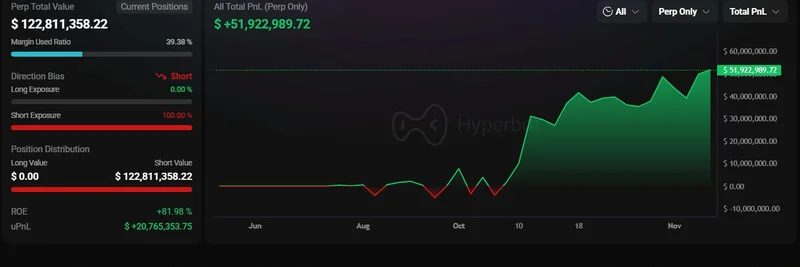The BGROK ticker shows up across multiple chains and contracts, a common meme-era headache. This article focuses on the BGROK token associated with the BNB Smart Chain address 0x94a5cfc7517c67d634ff94a599e27ca9d87731f8. We’ll unpack what’s verifiable, where the data conflicts, and how to protect yourself in a noisy, copycat-heavy market.
What is BGROK at this address?
- Chain and standard: BNB Smart Chain (BEP-20)
- Contract: 0x94a5cfc7517c67d634ff94a599e27ca9d87731f8
- Ticker/name: BGROK; often labeled “Baby Grok.” Some sources also mention “BANKER GROK,” “BNB Grok,” or “BABYGROK” under other contracts, which is the root of the confusion.
- Visibility: Public indexing for this specific contract has been inconsistent. That can happen with very new, illiquid, or minimally active tokens—or with data aggregator mismatches.
Why the data looks messy
- Same ticker, different tokens: Multiple BGROK-branded contracts exist on BNB Chain (for example, 0xdf4b6c8e756b99dbc0df998cd551dc43ce2499f3, 0x087e48e1e8e6b48ea2ef318fc7d9f40542bfaf9d, 0x2b1b00e8c0e078b43dd240953ff8780a45918dd8). That increases the odds of mislabels and scams.
- Cross-chain confusion: Some trackers reference Ethereum tooling (e.g., Etherscan, Uniswap) even though the focus here is a BNB Smart Chain contract. This could reflect multichain variants or plain misreporting by aggregators.
- Hype vs. proof: Claims like “Elon Musk backing” appear on listing sites without team-approved verification. Treat those as marketing until proven otherwise.
Snapshot of conflicting market data (handle with care)
These examples illustrate how messy aggregator data can be—use them as starting points, not facts:
- Price: ~$0.0012 per CoinBrain
- Market cap: $125k (CoinBrain) vs. $534,513 (ApeSpace) — a wide gap driven by differing inputs like circulating supply
- Volume: ~$678k 24h per CoinBrain
- DEX mentions: Some pages reference Uniswap V2/V3 and ParaSwap, which are Ethereum-first tools, despite the BNB Chain focus. Always confirm you’re on the correct chain before trading.
Key risks at a glance
- Ambiguous identity: Multiple BGROK contracts increase the chance of picking the wrong one.
- Unverified claims: “Backed by Elon Musk” is unsubstantiated; treat as a red flag.
- Contract uncertainty: If the source code isn’t verified on BscScan, hidden functions (e.g., minting, blacklist, variable taxes) might exist.
- Liquidity and volatility: Thin pools can mean high slippage, easy manipulation, and difficulty exiting.
- Social engineering: Meme tokens thrive on virality. Without a real roadmap, audits, or transparent tokenomics, the risk profile is high.
How to verify before you trade
- Confirm the contract
- Start with BscScan for 0x94a5…31f8. Ensure the contract you interact with matches exactly. Beware of lookalike tickers.
- Check source-code verification
- On BscScan, look for “Contract” > “Code” to see if it’s verified. If unverified, proceed with extreme caution.
- Review critical functions
- Look for owner privileges, trading taxes, blacklist/whitelist logic, and mint/burn controls. Excessive control by a single wallet is a risk.
- Inspect holders and liquidity
- Check top holders’ percentages and LP (liquidity pool) lock status. Concentration in a few wallets or unlockable LP are classic red flags.
- Validate narratives
- Claims about AI, education, or celebrity backing should be supported by an official website, whitepaper, and signed announcements on verifiable social accounts. Treat AI-generated listings as unconfirmed marketing.
- Security posture
- Prefer projects with audits from reputable firms like CertiK. Use scam awareness resources such as the DFPI Crypto Scam Tracker.
- Approvals hygiene
- Before interacting with any new token, understand ERC/BEP approvals and how to revoke them later if needed. Approvals let contracts move your tokens—only approve what you must.
Trading considerations
- Match the DEX to the chain
- If you’re dealing with a BEP-20 token on BNB Chain, PancakeSwap is the native DEX. If you find an Ethereum-side BGROK, Uniswap might be relevant—but only after you verify you’re on the correct contract and chain.
- Compare multiple data sources
- Cross-check price, liquidity, and taxes across explorers and aggregators. Inconsistent data is a signal to slow down.
- Use tooling to monitor flow and risk
- For live tracking and research, you can analyze this token on GMGN.AI. It’s useful for spotting behavioral patterns and potential red flags before you hit buy.
Context: the “Grok” meme wave
“Grok”-themed tokens exploded after the rise of Grok AI associated with xAI. You’ll see variants like “Baby Grok,” “Based Grok,” “Bonk Grok,” and more across Ethereum, BNB Chain, and other ecosystems. Most are pure meme plays driven by social media cycles. A few meme tokens evolve into something bigger, but the majority don’t. The burden of proof sits with the project.
Practical checklist for blockchain practitioners
- Contract: Exact-address confirmation and code verification on BscScan
- Tokenomics: Total supply, decimals, emissions, and holder distribution
- Liquidity: Pool size, LP lock duration, and ownership of LP tokens
- Controls: Owner privileges, pausability, transfer limits, and tax mechanics
- Activity: Transaction patterns—excessive approvals, bot-like flows, or wash trading
- Communications: Website, docs, roadmap, and signed team posts; avoid unverifiable endorsements
- Security: Independent audits, renounced ownership where applicable, and community transparency
Bottom line
The BGROK token at 0x94a5cfc7517c67d634ff94a599e27ca9d87731f8 sits in a fog of ticker collisions and mixed aggregator data—exactly the environment where careful verification matters most. If you choose to engage, validate the contract on-chain, confirm the DEX and chain match, and scrutinize tokenomics, ownership, and liquidity before committing capital. In meme markets, skepticism is a feature, not a bug.


